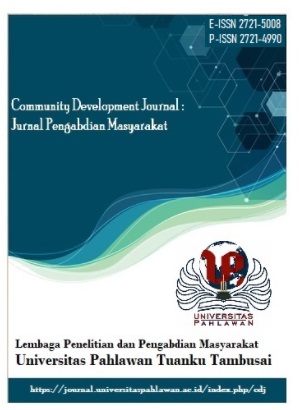A CLASSROOM DISCOURSE ANALYSIS OF TEACHER-STUDENTS’ INTERACTION AT SMP NEGERI 7 MEDAN
DOI:
https://doi.org/10.31004/jrpp.v7i4.35768Keywords:
Classroom discourse, Classroom Interaction, Teacher, Student .Abstract
This study aimed at analyzing the process of classroom interaction between a teacher and students at SMP Negeri 7 Medan from the perspectives of discourse analysis. It focused on how these interactions influence student engagement and learning outcomes. Using a qualitative approach, a 10-minute video recording was observed to identify key verbal and non-verbal communication patterns within the classroom. The interactions were categorized based on teacher-initiated questions, feedback, disciplinary actions, and student-initiated responses. The findings reveal that openended questions and positive reinforcement by the teacher significantly increased student participation. Conversely, disciplinary actions, though minimal, temporarily reduced engagement but improved classroom behavior. The study concludes that teacher-student communication plays a vital role in creating a productive learning environment and recommends further integration of collaborative learning strategies to enhance student involvement. This research contributes to the existing body of literature on classroom management and effective communication in Indonesian public schools.References
Azizah, et al. (2022). Classroom Discourse Analysis on English Learning Interaction During the Covid-19 Pandemic. IDEAS: Journal of Language Teaching and Learning, Linguistics and Literature. Vol. 10, No. 2.
Arief, S. (2020). Peningkatan Keterlibatan Siswa Melalui Interaksi Guru-Siswa di Kelas Menengah. Jurnal Pendidikan Indonesia, 9(2), 112-125.
Brown, H. D. (2001). Teaching by Principles: An Interactive Approach to Language Pedagogy. New York: Pearson Education Company.
Chandra, R, et al. (2021). An Analysis of Initiation Response Feedback (IRF) Pattern In Classroom.
Congmin, Z. (2016). Factors Inflencing Student Participation in Classroom Interaction. Higher.
Creswell, J. W. (2009). Research design: Qualitative, quantitative, and mixed method approaches. Thousand Oaks, CA: Sage Publications. Education of Social Science Vol. 11, No. 3.
Domalewska, D. (2017). Discourse Analysis of Teacher Talk: Code Switching in Content and Language Integrated Learning (CLIL) Classrooms in Thailand. Arian Journal of Education and e-Learning Vol. 05 issue 02.
Fadli, A. (2018). Hubungan Interaksi Guru-Siswa dan Dampaknya Terhadap Hasil Belajar. Jurnal Pendidikan dan Pembelajaran, 15(3), 45-59.
Ginting, D., & Siregar, H. (2019). Tantangan dalam Meningkatkan Partisipasi Siswa di Sekolah Menengah Atas Negeri di Indonesia. Jurnal Pendidikan dan Manajemen Kelas, 6(1), 76-89.
Harsono, H. (2017). Analisis Interaksi Verbal dan Non-Verbal di Ruang Kelas: Studi Kasus di Sekolah Negeri. Jurnal Pendidikan Bahasa dan Sastra Indonesia, 4(2), 132-147.
Pratama, I. (2019). Pengaruh Lingkungan Kelas terhadap Interaksi Siswa dan Guru di Sekolah Menengah. Jurnal Penelitian Pendidikan Indonesia, 5(3), 39-52.
Sudjana, D. (2016). Pembelajaran Berpusat Pada Siswa: Konsep dan Implementasi di Sekolah Menengah. Jurnal Pendidikan dan Teknologi Informasi, 12(1), 22-34.
Suryadi, A. (2018). Pengelolaan Kelas Berbasis Interaksi dalam Meningkatkan Hasil Belajar Siswa di Sekolah Menengah. Jurnal Inovasi Pendidikan Indonesia, 9(2), 103-118.
Utami, R. (2019). Peranan Pendekatan Konstruktivis dalam Meningkatkan Pembelajaran Kolaboratif di Sekolah Dasar dan Menengah. Jurnal Pendidikan Dasar Indonesia,8(4), 188-201.
Yulia, R. (2020). Strategi Guru dalam Meningkatkan Keterlibatan Siswa Melalui Metode Tanya Jawab. Jurnal Pendidikan dan Pengajaran, 11(2), 65-79.
Downloads
Published
How to Cite
Issue
Section
License
Copyright (c) 2024 Hizkia Junieuro Sebayang

This work is licensed under a Creative Commons Attribution-ShareAlike 4.0 International License.






